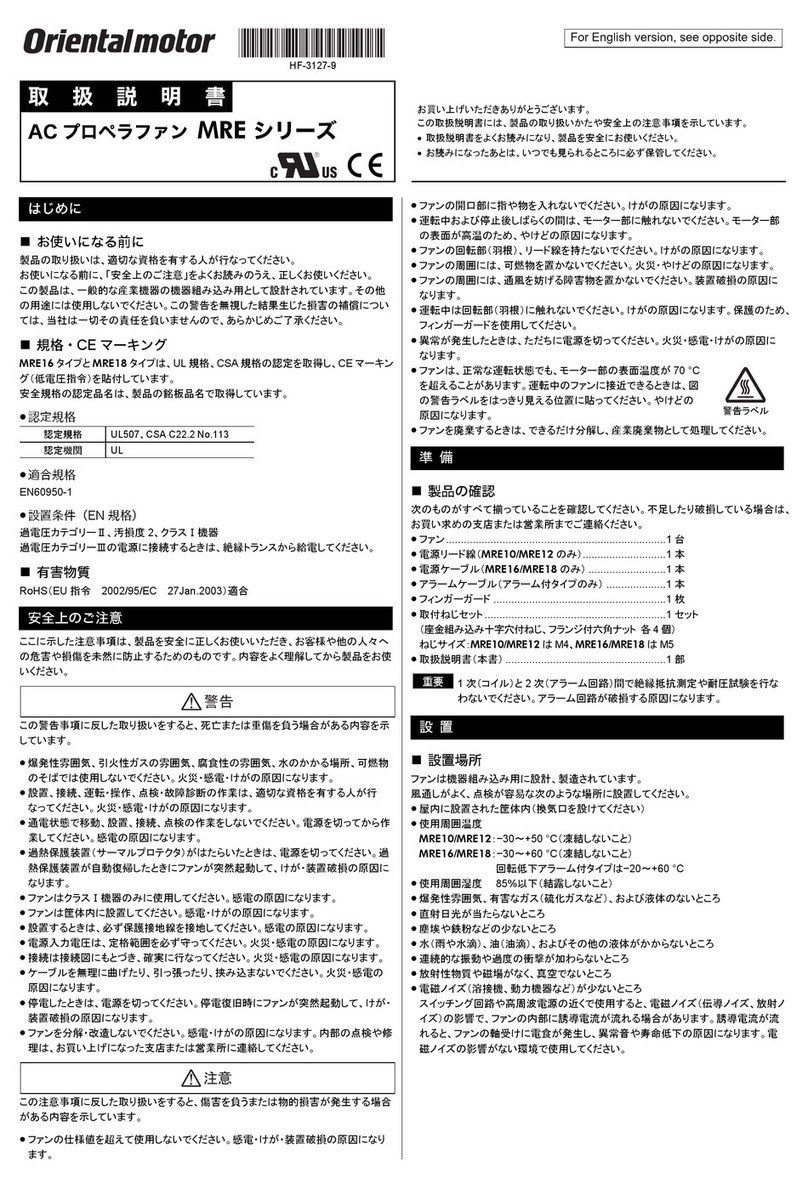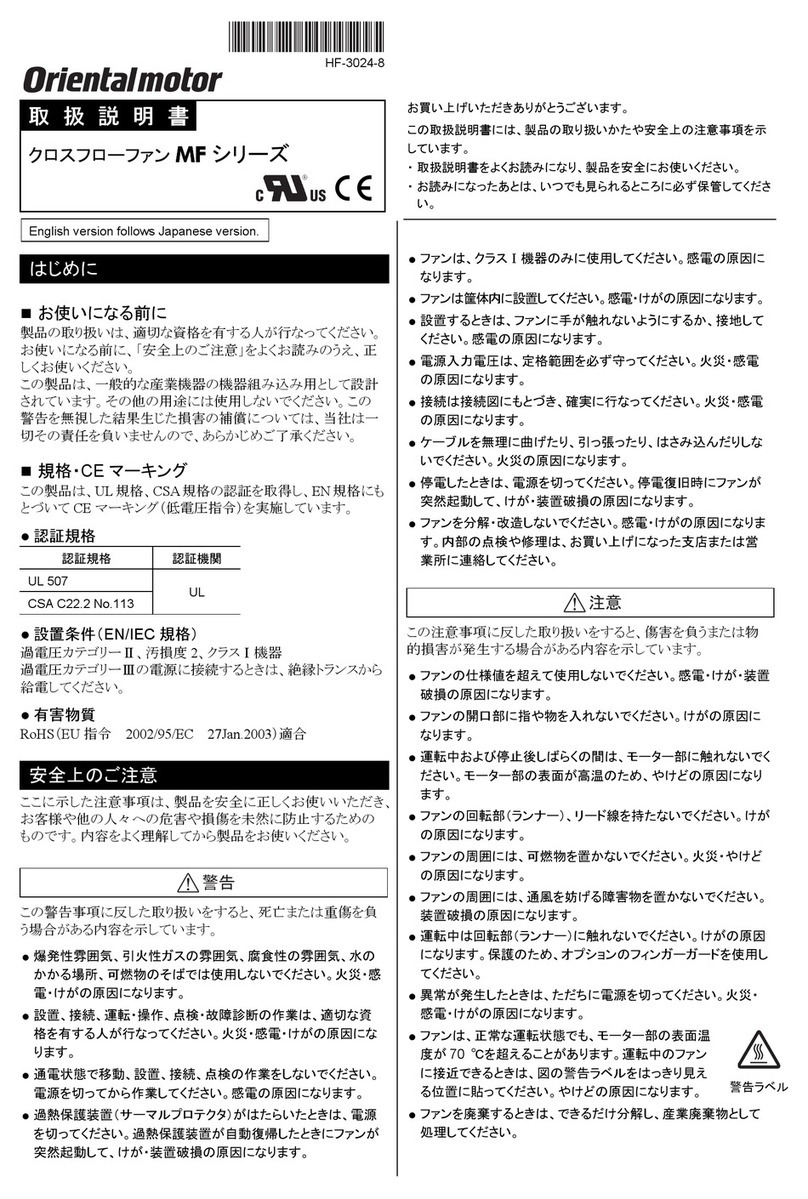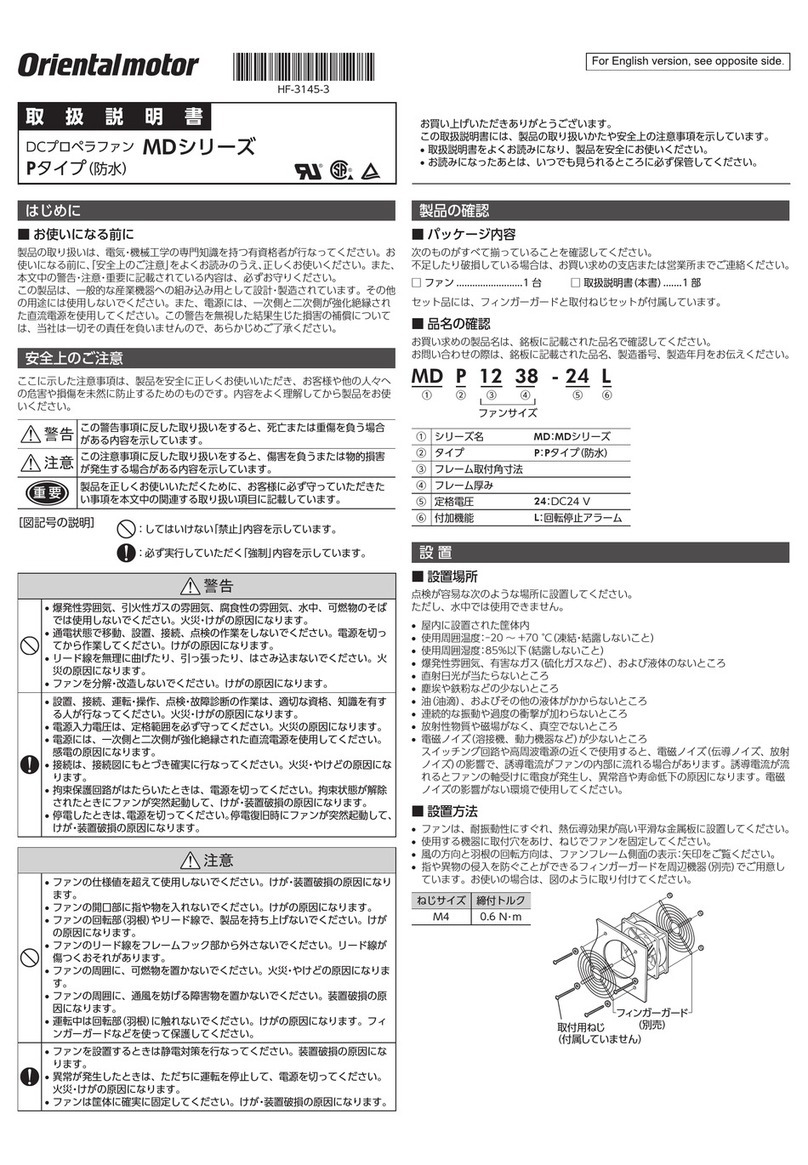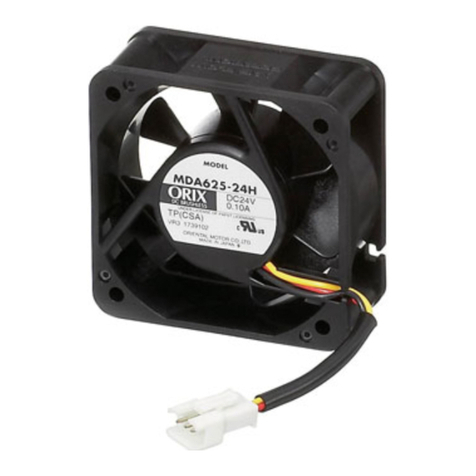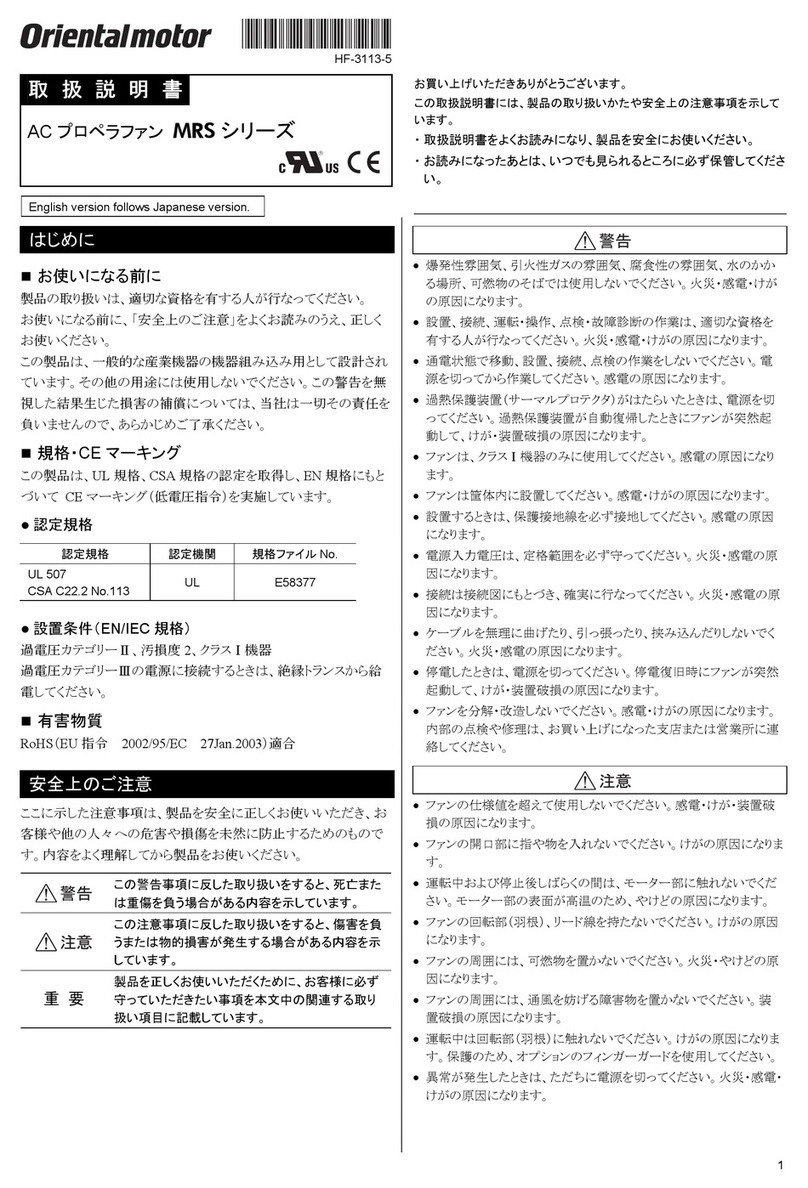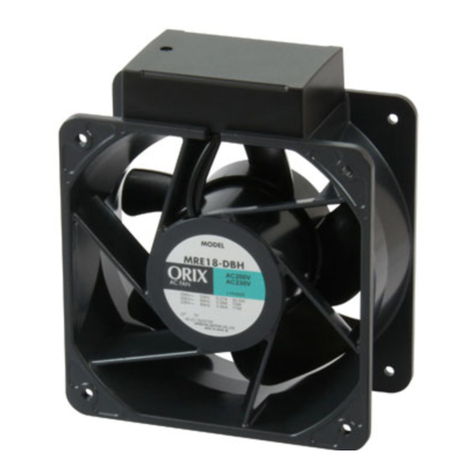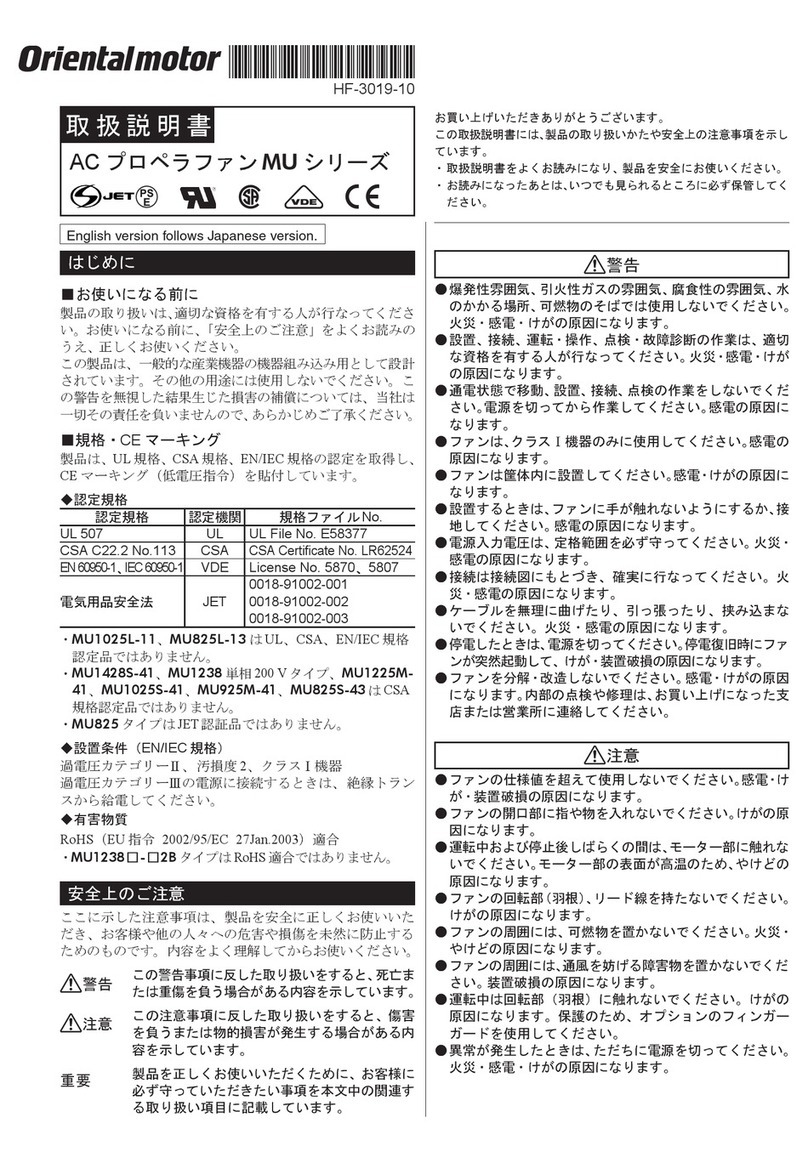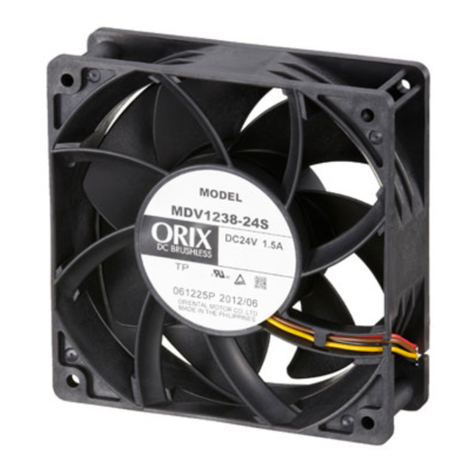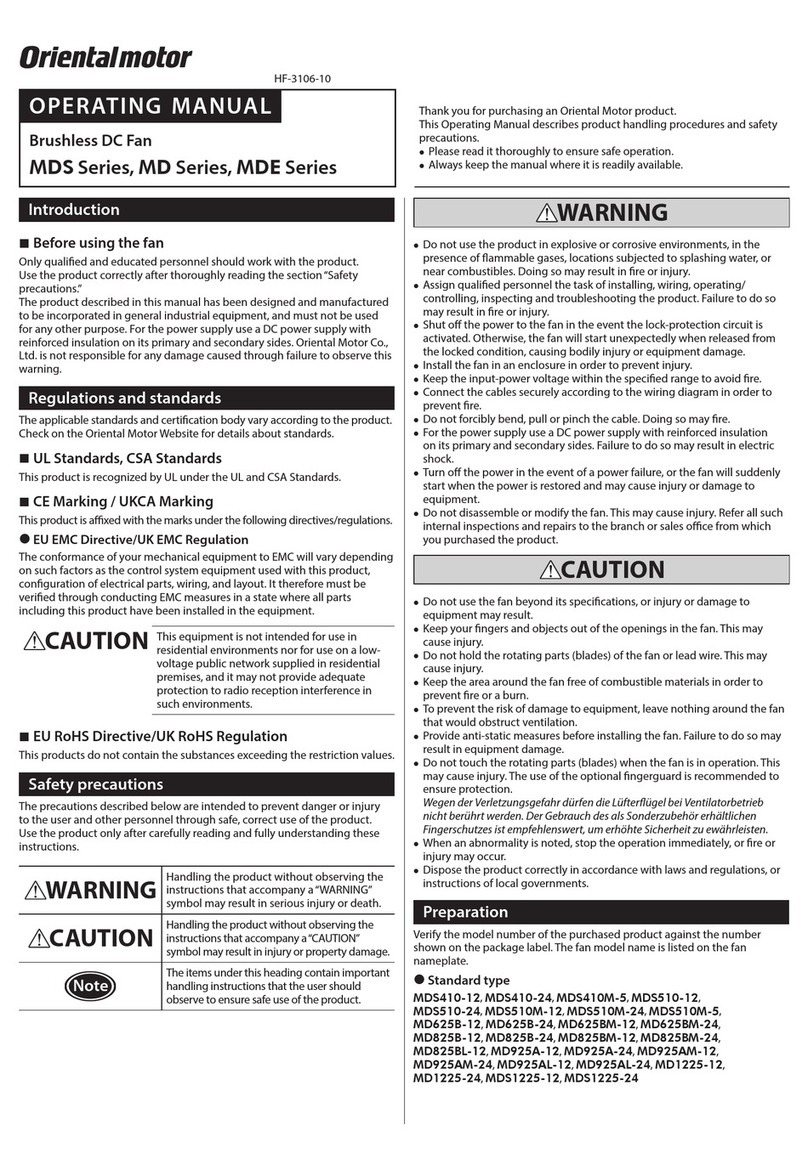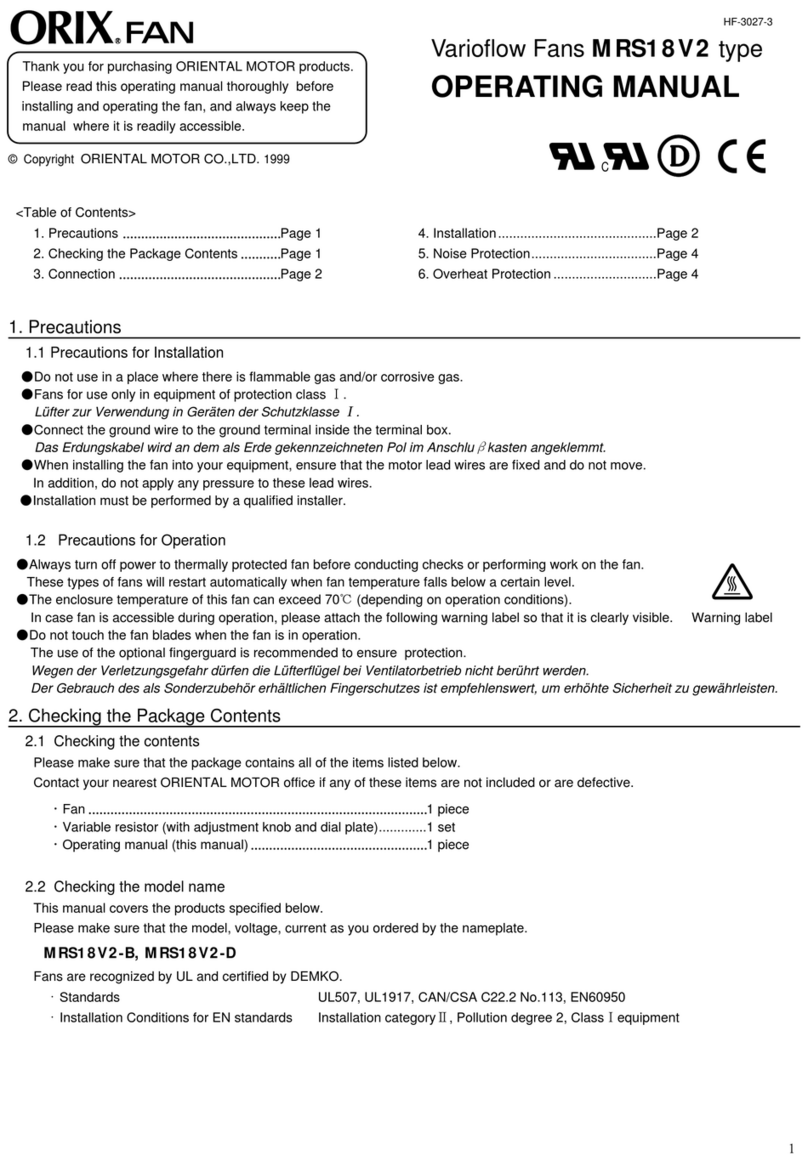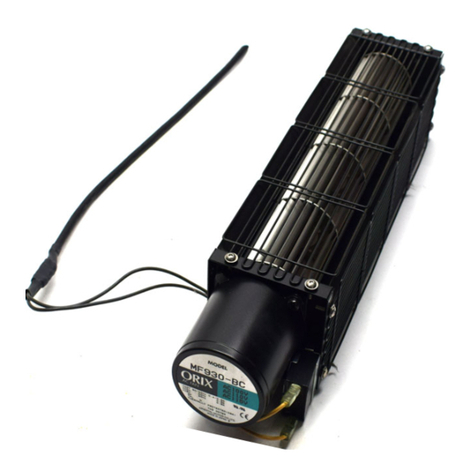
1
HF-3113-12
OPERATING MANUAL •
Thank•you•for•purchasing•an•Oriental•Motor•product.
•
This•Operating•Manual•describes•product•handling•procedures•and•
safety•precautions.
•
Please•read•it•thoroughly•to•ensure•safe•operation.
•
Always•keep•the•manual•where•it•is•readily•available.
AC Axial Flow Fans MRS Series
••
Introduction
Before use
Only qualied and educated personnel should work with the product.
Use the product correctly after thoroughly reading the section “Safety
precautions.”
The product described in this manual has been designed and
manufactured to be incorporated in general industrial equipment.
Do not use for any other purpose. Oriental Motor Co., Ltd. is not
responsible for any damage caused through failure to observe this
warning.
Standard · CE Marking
zUL Standard, CSA Standard
The product is recognized by UL under the UL and CSA Standards.
Standards Certication•body
UL•507•
CSA•C22.2•No.113 UL
zEU Directive
CE Marking
The CE mark is afxed to the standard type based on Low Voltage
Directive.
The CE mark is afxed to the alarm type based on Low Voltage
Directive and EMC Directive.
Low Voltage Directive
Standards: EN 60950-1
Installation conditions (For EN Standards)
Overvoltage category II, Pollution degree 2, Class I equipment
When connecting to a power supply of overvoltage category III,
supply power via the insulation transformer.
EMC Directive (Only alarm type)
Standards: EN 61000-6-2, EN 61000-6-4
RoHS Directive
The products do not contain the substances exceeding the restriction
values of RoHS Directive (2011/65/EU).
Republic of Korea, Radio Waves Act.
(Only alarm type)
KC Mark is afxed to this product under the Radio Waves
Act, the republic of Korea.
Safety precautions
The precautions described below are intended to prevent danger or
injury to the user and other personnel through safe, correct use of
the product. Use the product only after carefully reading and fully
understanding these instructions.
Handling•the•product•without•observing•the•instructions•that•
accompany•a•“Warning”•symbol•may•result•in•serious•injury•or•
death.
Do not use the product in explosive or corrosive environments, in the
presence of ammable gases, locations subjected to splashing water, or
near combustibles. Doing so may result in re, electric shock or injury.
Only qualied and educated personnel should be allowed to perform
installation, connection, operation and inspection/troubleshooting of
the product. Failure to do so may result in re, electric shock or injury.
Do not transport, install the product, perform connections or inspections
when the power is on. Always turn the power off before carrying out
these operations. Failure to do so may result in electric shock.
Turn off the power in the event the overheat protection device (thermal
protector) is triggered. Failure to do so may result in injury or damage
to equipment, since the fan will start abruptly when the overheat
protection device (thermal protector) is automatically reset.
The fan is Class I equipment. Install the fan so as to avoid contact with
hands, or ground it to prevent the risk of electric shock.
Install the fan in an enclosure in order to prevent electric shock or
injury.
Keep the input-power voltage within the specied range to avoid re
and electric shock.
Connect the cables securely according to the wiring diagram in order to
prevent re and electric shock.
Do not forcibly bend, pull or pinch the cable. Doing so may re and
electric shock.
Turn off the power in the event of a power failure, or the fan will
suddenly start when the power is restored and may cause injury or
damage to equipment.
Do not disassemble or modify the fan. This may cause electric shock or
injury. Refer all such internal inspections and repairs to the branch or
sales ofce from which you purchased the product.
Handling•the•product•without•observing•the•instructions•that•
accompany•a•“Caution”•symbol•may•result•in•injury•or•property•
damage.
Do not use the fan beyond its specications, or electric shock, injury or
damage to equipment may result.
Keep your ngers and objects out of the openings in the fan. This may
cause injury.
Do not touch the motor during operation or immediately after stopping.
The surface is hot and may cause a skin burn(s).
Do not hold the rotating parts (blades) of the fan or lead wire. This may
cause injury.
